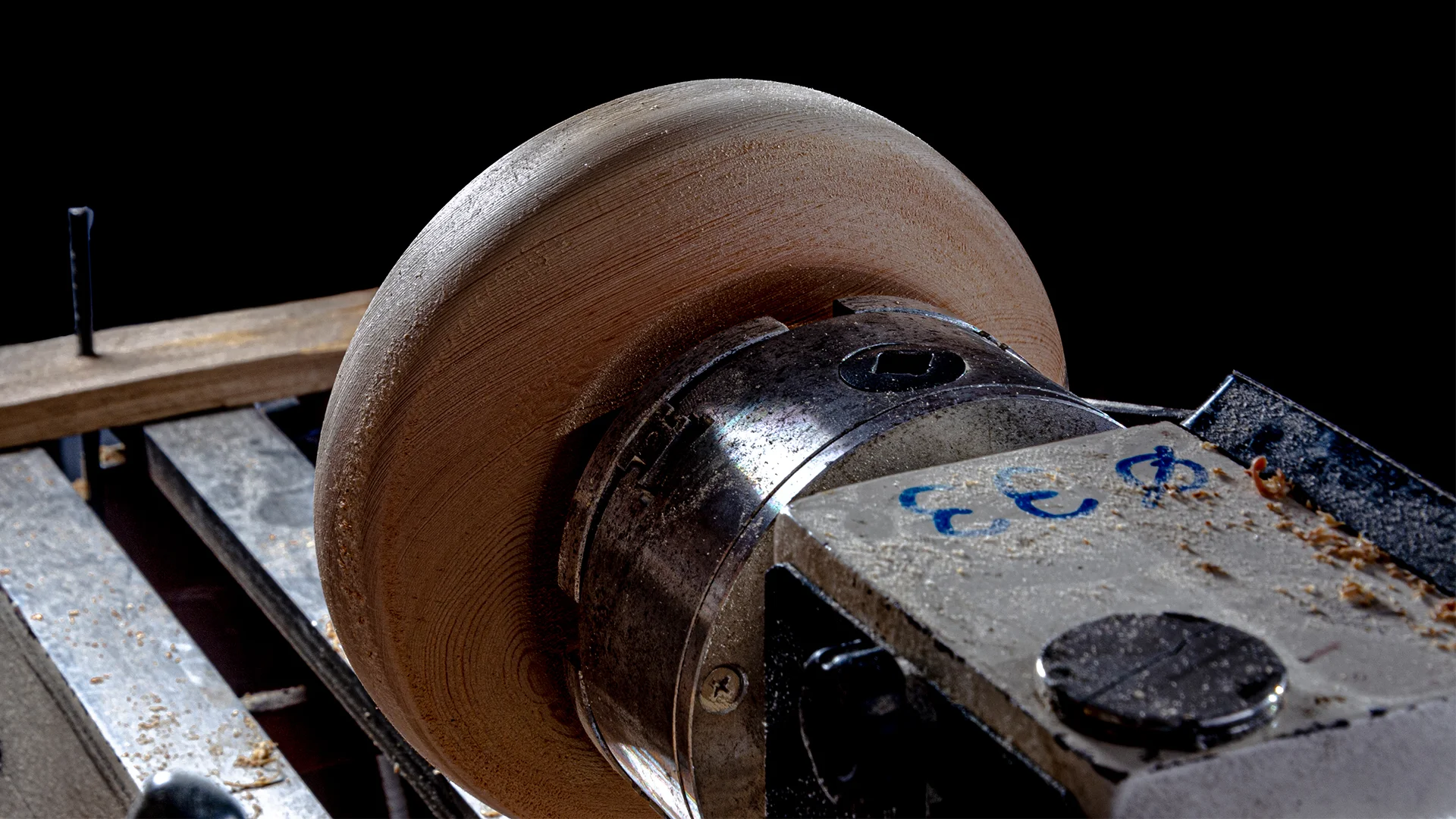
Our Blog

Risk Management Considerations for Woodworking Projects
Woodworking, like any activity involving tools and machinery, carries inherent risks. From minor cuts and splinters to more serious injuries, accidents can happen if proper precautions are not taken. This is where risk management comes into play.
Risk management in woodworking is a proactive approach to identifying, assessing, and mitigating potential hazards before they lead to accidents or injuries. By implementing effective risk management strategies, woodworkers can create a safe and enjoyable working environment where creativity and productivity can flourish.
Understanding the Risks in Woodworking
Before diving into risk management strategies, it’s crucial to have a clear understanding of the types of risks present in woodworking. By recognizing these potential hazards, woodworkers can take proactive steps to protect themselves and create a safer working environment.
General Hazards
- Sharp Tools and Equipment – Saws, chisels, routers, and other cutting tools can cause severe lacerations or punctures if mishandled. It’s crucial to always use sharp tools correctly, keep them properly maintained, and never operate them when distracted or fatigued.
- Flying Debris and Dust – Woodworking operations generate a considerable amount of dust and debris, which can become airborne and pose a hazard to the eyes, respiratory system, and skin. Long-term exposure to wood dust has been linked to serious health conditions, including asthma, bronchitis, and even certain types of cancer. Investing in effective dust collection systems, wearing appropriate respiratory protection, and maintaining good ventilation in the workshop are crucial for mitigating these risks.
- Heavy Machinery – Table saws, jointers, planers, and other large machines pose a risk of serious injury if not operated correctly or if safety guards are removed. It’s essential to receive proper training before operating any heavy machinery, always use safety guards and devices, and never remove or bypass safety features.
- Chemical Hazards – Many woodworking projects involve the use of finishes, adhesives, solvents, and other chemicals that can release harmful fumes or cause skin irritation, allergic reactions, or even long-term health problems. Always read and follow the manufacturer’s instructions carefully, wear appropriate personal protective equipment (PPE), and work in a well-ventilated area when using chemicals.
- Fire Hazards – Woodworking shops often contain flammable materials, such as sawdust, finishes, and solvents, which can ignite if proper precautions are not taken. It’s crucial to keep the workspace clean and organized, store flammable materials safely, and have fire extinguishers readily available.
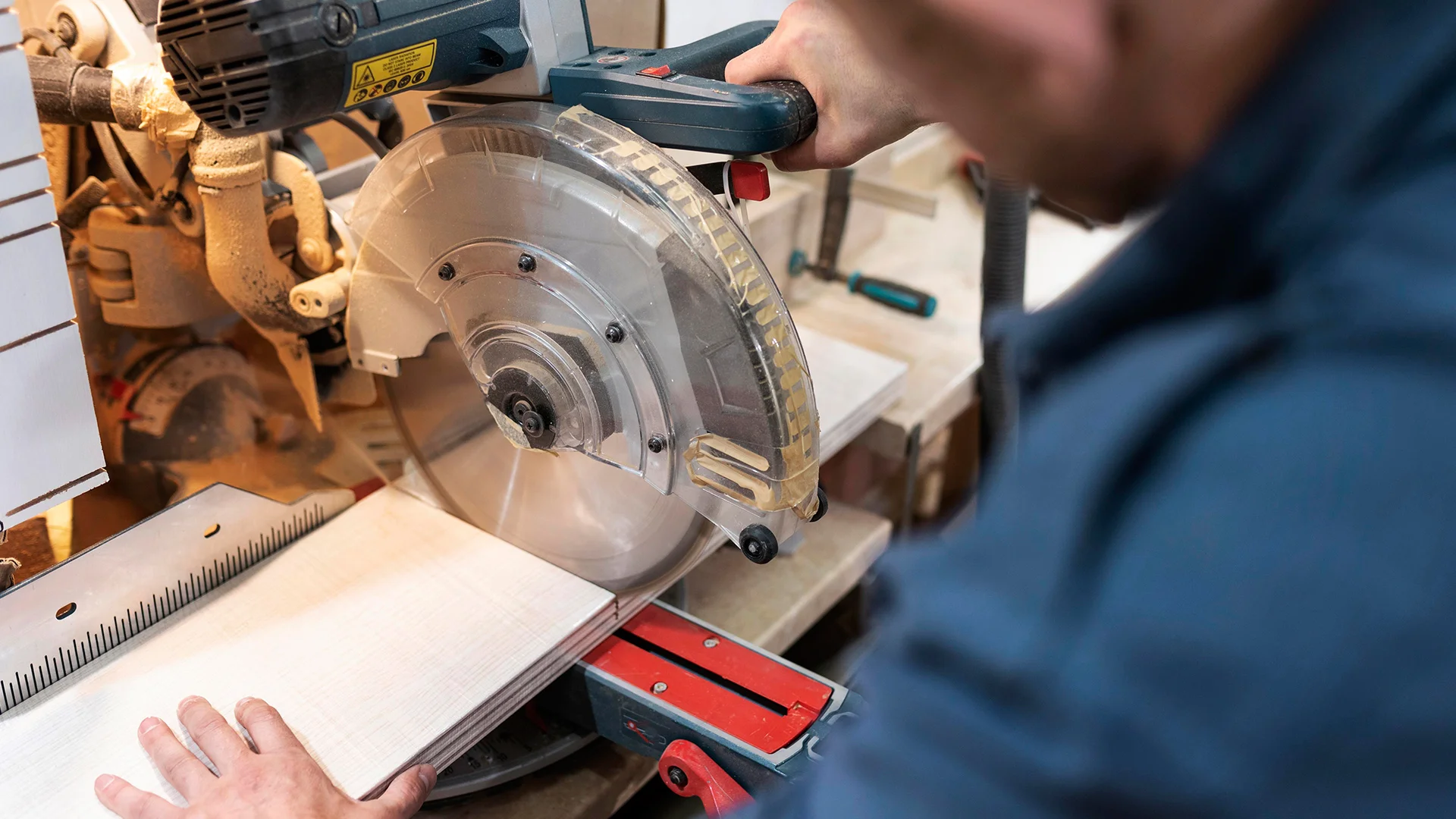
Sharp tools require focus and precision. Avoid distractions and maintain tools properly for a safe woodworking experience.
Project-Specific Risks
Beyond the general hazards, each woodworking project carries its own unique set of risks, which can vary depending on several factors:
- Complexity of the Design – Intricate designs often require specialized tools, techniques, or materials that can increase the risk of accidents. Before embarking on a complex project, woodworking businesses should carefully assess the skills and experience of their woodworkers, provide additional training if needed, and plan each step meticulously.
- Type of Wood – Different wood species have varying characteristics, such as hardness, density, and grain patterns, which can affect the level of risk involved. Some woods are more prone to splintering or kickback, while others may release irritating dust or fumes. It’s crucial to research the specific wood species being used and take appropriate precautions.
- Skill Level – Less experienced woodworkers may be more susceptible to accidents due to unfamiliarity with tools, techniques, or safety protocols. It’s important for beginners to start with simpler projects, seek guidance from experienced woodworkers, and never attempt tasks beyond one’s skill level.
- Specialized Tools – The use of unfamiliar or specialized tools can increase the risk of injury, especially if proper training and instruction have not been received. Always read the tool’s manual carefully, practice on scrap material before working on the actual project, and seek expert advice if needed.
By understanding both the general and project-specific risks associated with woodworking, woodworkers can make informed decisions, implement appropriate safety measures, and significantly reduce the likelihood of accidents and injuries. Remember, safety is an ongoing process that requires constant vigilance, awareness, and a commitment to continuous learning and improvement.
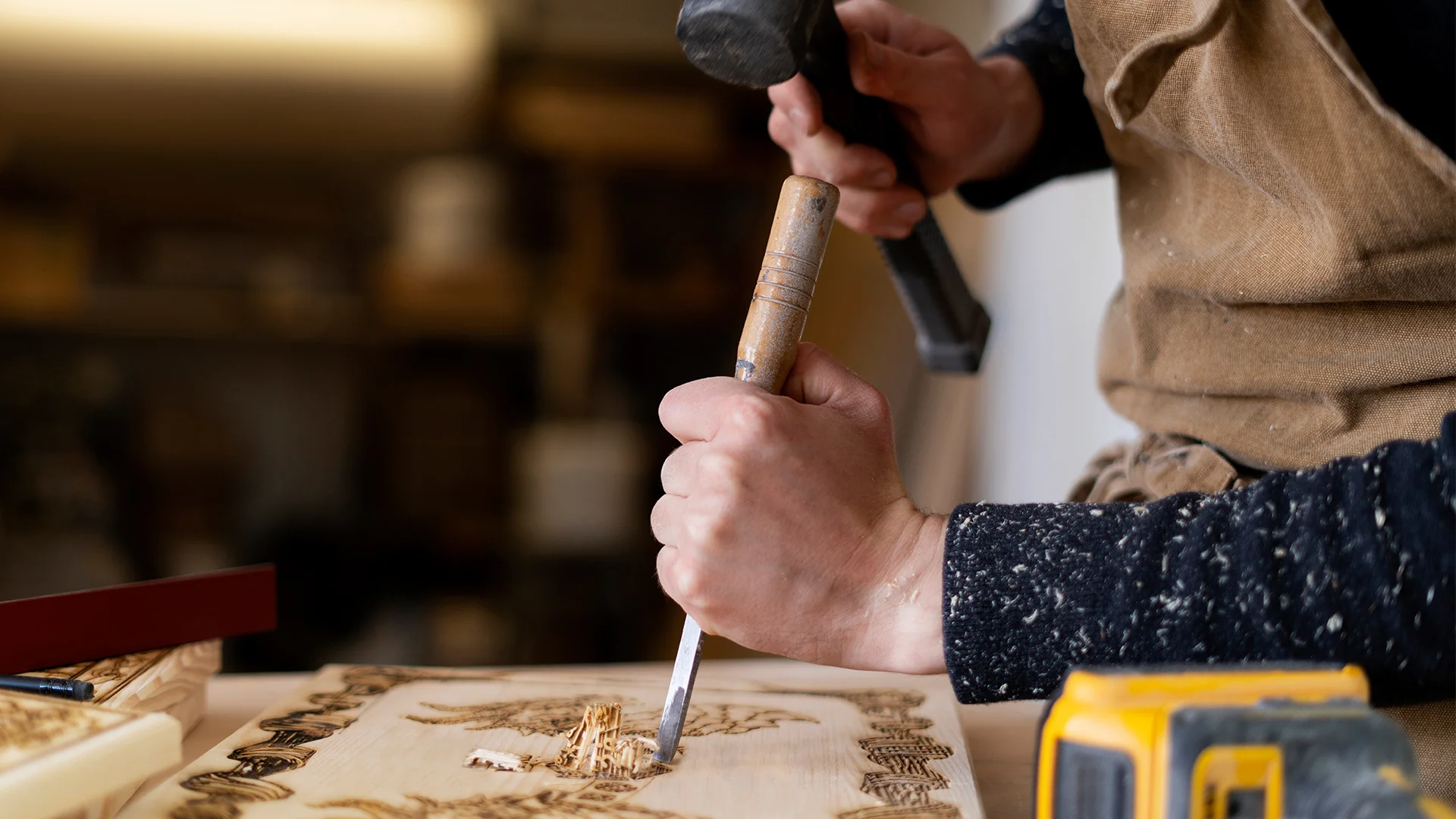
Intricate designs demand both skill and meticulous planning. Ensure your team is equipped for the challenge before tackling complex projects.
Woodworking Risk Assessment
A woodworking risk assessment is a vital step in any project, acting as a proactive safeguard against potential hazards. This methodical process thoroughly examines all facets of the project, from tools and materials to tasks and the work environment. By meticulously identifying, analyzing, and evaluating risks, woodworkers can take informed steps to mitigate or eliminate them before accidents occur.
- Identifying Potential Hazards – Carefully examine the project, tools, materials, and work environment to pinpoint potential hazards.
- Project Analysis – Scrutinize the design, plans, and materials, focusing on complexities or challenges.
- Tool and Equipment Inspection – Ensure all tools are in good working order and have necessary safety features.
- Material Evaluation – Assess materials for potential hazards like toxicity or flammability.
- Work Environment Assessment – Evaluate the workspace for adequate lighting, ventilation, and any potential trip hazards.
- Assessing Likelihood and Severity – Once hazards are identified, assess their likelihood of occurring and the potential severity of their consequences:
- Likelihood Assessment – Consider factors like task frequency, worker experience, tool condition, and the environment.
- Severity Assessment – Evaluate potential injuries, property damage, or long-term health effects.
- Prioritizing Risks – The final step is to prioritize risks based on their likelihood and potential impact:
- Risk Matrix – Use a visual tool to plot likelihood and severity, easily identifying high-priority risks.
- Action Plan – Develop a plan to address each risk, outlining mitigation measures, responsible parties, and timelines.
By conducting a thorough woodworking risk assessment, woodworkers gain a deep understanding of potential hazards and can proactively create a safer and more productive environment. Remember, safety is not just a precaution; it’s an investment in your well-being and the success of your projects.
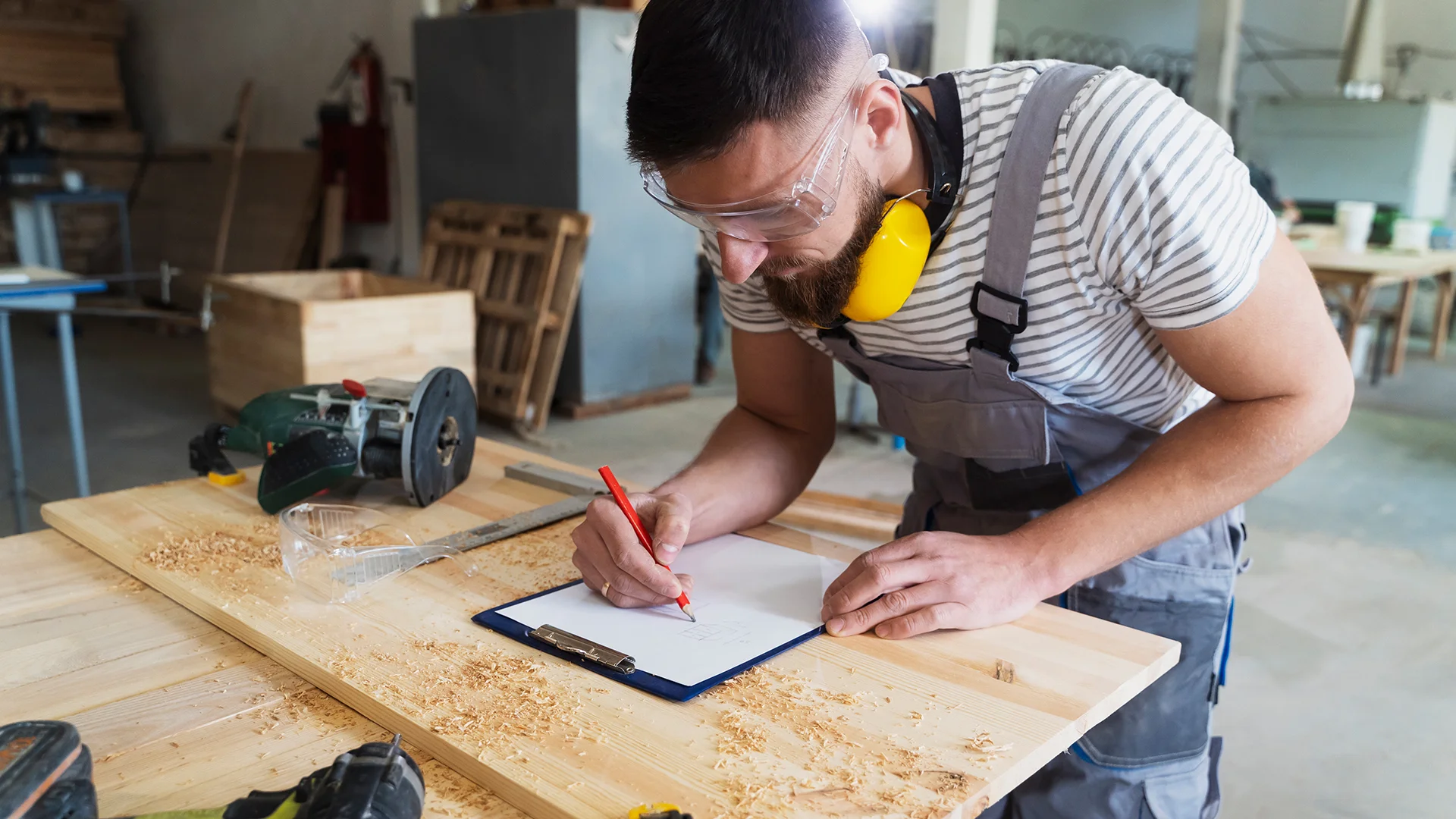
Take the crucial step of prioritizing potential hazards. A well-crafted risk matrix and action plan are your blueprints for a safe and successful woodworking journey.
Risk Analysis for Woodworking Projects
Once potential hazards have been identified through a risk assessment, it’s crucial to conduct a thorough risk analysis to gain a deeper understanding of these risks and develop effective mitigation strategies. Several powerful techniques can be employed to dissect the complexities of woodworking projects and uncover hidden vulnerabilities.
Job Safety Analysis (JSA): Step-by-Step Scrutiny
JSA is a methodical approach that involves dissecting a woodworking task into its individual steps, meticulously examining each step for potential hazards. By breaking down the process into its constituent parts, woodworkers can identify specific points where accidents or injuries are most likely to occur.
For example, when using a table saw, a JSA might involve analyzing steps like:
- Setting up the saw – Ensuring the blade is properly aligned, the fence is secure, and safety guards are in place.
- Preparing the workpiece – Checking for nails, screws, or other foreign objects that could damage the blade or cause kickback.
- Making the cut – Using proper techniques to feed the workpiece into the blade, maintaining control, and avoiding distractions.
- Cleaning up – Safely removing sawdust and debris from the saw and surrounding area.
By meticulously examining each step, woodworkers can pinpoint potential hazards, such as blade contact, kickback, or entanglement with moving parts, and develop specific safety protocols to address them.
Failure Mode and Effects Analysis (FMEA): Predicting and Preventing Failures
FMEA takes a proactive approach by focusing on potential failure points in a process or system and their potential consequences. By systematically identifying and analyzing these failure modes, woodworkers can anticipate problems before they occur and implement preventive measures to mitigate their impact.
In woodworking, FMEA could be used to analyze:
- Tool Failures – Identifying potential malfunctions or breakdowns of tools and equipment and their potential consequences.
- Material Failures – Examining how materials might react under stress, heat, or moisture and the potential impact on the project or worker safety.
- Process Failures – Analyzing potential errors or deviations from established procedures and their potential consequences.
By proactively addressing potential failure modes, woodworkers can reduce the likelihood of accidents, minimize project delays, and improve overall quality and efficiency.
Root Cause Analysis (RCA): Learning from Mistakes
RCA is a powerful tool used to investigate accidents or near-misses, digging deep to uncover the underlying causes and contributing factors. By understanding the root causes of past incidents, woodworkers can implement corrective actions to prevent similar occurrences in the future.
RCA involves a systematic and thorough investigation, including:
- Gathering Information – Collecting data from witnesses, examining the scene, and reviewing any relevant documentation.
- Identifying Causal Factors – Analyzing the sequence of events leading up to the incident and identifying the underlying causes.
- Developing Corrective Actions – Implementing changes to procedures, equipment, or training to prevent future occurrences.
RCA is a valuable tool for continuous improvement, fostering a culture of safety and learning within the woodworking environment.
By employing these risk analysis techniques, woodworkers can gain a deeper understanding of the potential hazards associated with their projects and develop effective mitigation strategies. Remember, safety is not just about reacting to accidents; it’s about proactively anticipating and preventing them, ensuring a safe and productive woodworking experience for all.
Risk Mitigation in Woodworking
Once the potential hazards in woodworking have been thoroughly identified and analyzed, it’s time to implement robust risk mitigation strategies. This crucial phase involves taking proactive measures to minimize or eliminate these risks, creating a protective shield around woodworkers and their projects.
Personal Protective Equipment (PPE): Your First Line of Defense
PPE acts as a barrier between you and potential hazards, significantly reducing the risk of injury. It’s essential to always wear appropriate PPE, including:
- Safety Glasses – Protect your eyes from flying debris, dust, and chemical splashes. Choose glasses that comply with relevant safety standards and provide adequate coverage.
- Hearing Protection – Loud machinery can cause permanent hearing damage. Wear earplugs or earmuffs to protect your hearing, especially when operating power tools for extended periods.
- Gloves – Protect your hands from cuts, splinters, and chemical exposure. Choose gloves appropriate for the specific task, ensuring they offer sufficient dexterity and grip.
- Respiratory Protection – When working with materials that generate dust or fumes, wear a respirator or dust mask to protect your lungs. Choose a respirator that is rated for the specific hazards you’re exposed to and ensure a proper fit.
- Protective Clothing – Wear clothing that covers your arms and legs to protect against cuts, splinters, and chemical splashes. Avoid loose clothing or jewelry that could get caught in machinery.
- Safety Footwear – Wear sturdy shoes with non-slip soles to protect your feet from falling objects and prevent slips and falls. Steel-toed boots may be necessary when working with heavy machinery or materials.
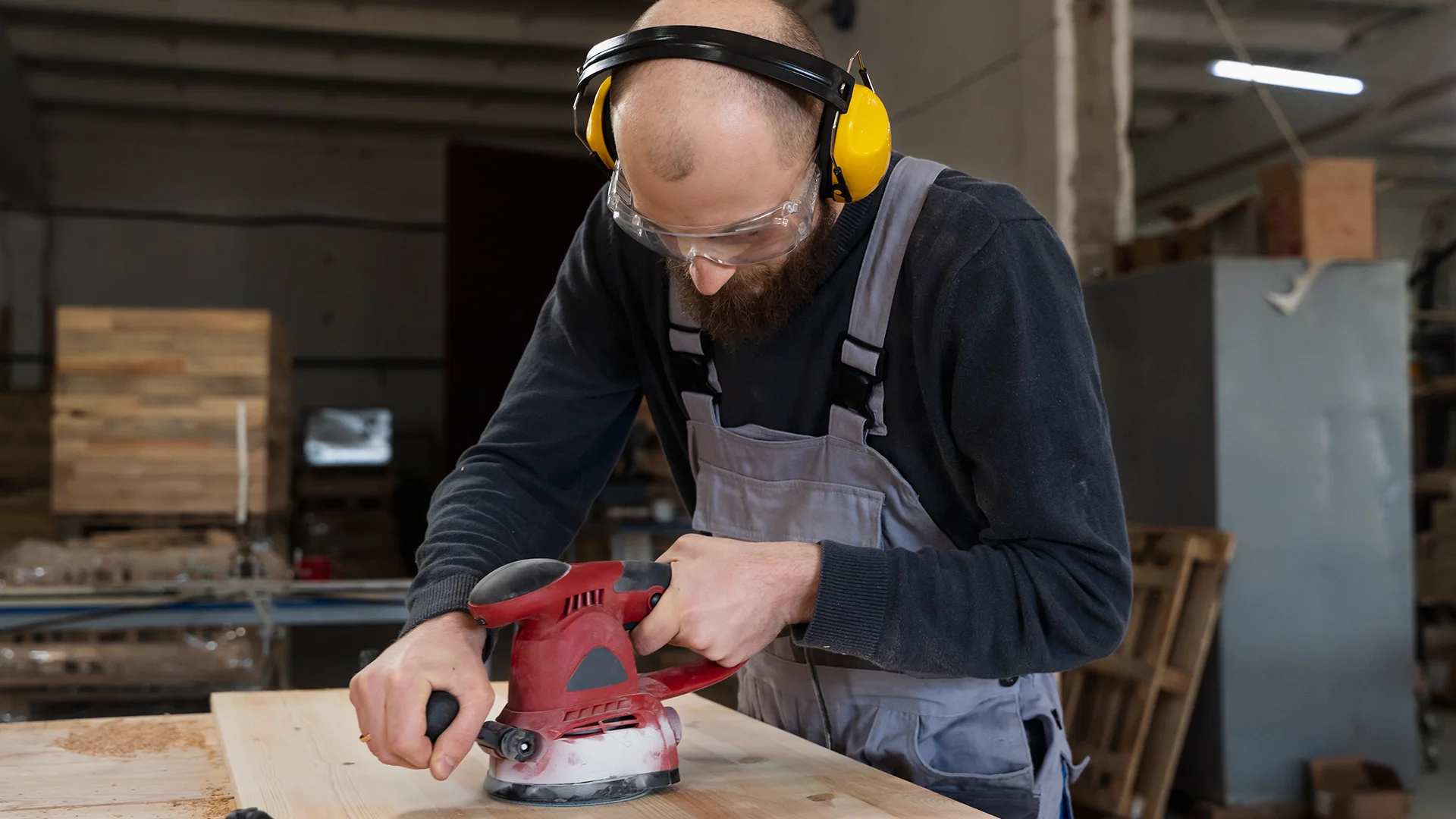
Protect your eyes with safety glasses and your ears with hearing protection when using loud machinery or facing potential debris. Choose gear that meets safety standards and offers adequate coverage.
Safe Work Practices: The Foundation of a Secure Environment
Safe work practices are the bedrock of a secure woodworking environment. By adhering to established safety procedures and using tools correctly, woodworkers can significantly reduce the risk of accidents.
- Follow Established Procedures – Always follow manufacturer instructions and recommended safety guidelines for tools and equipment. Never take shortcuts or bypass safety features.
- Use Tools Correctly – Choose the right tool for the job and use it in the intended manner. Avoid using tools for purposes they were not designed for.
- Maintain a Clean and Organized Work Area – A cluttered workspace increases the risk of trips, falls, and accidents. Keep your work area clean, organized, and free of debris.
- Avoid Distractions – Focus on the task at hand and avoid distractions while operating machinery or using sharp tools. Never work when tired, under the influence of alcohol or drugs, or when feeling unwell.
- Seek Training and Assistance – If you’re unsure how to perform a task safely or use a particular tool, seek training or assistance from a qualified individual.
Proper Tool Selection and Maintenance: The Right Tools for the Job
Choosing the right tool for the job and keeping it in good working order is crucial for safe and effective woodworking.
- Select the Right Tool – Use tools that are appropriate for the task and the material being worked on. Avoid using makeshift tools or tools that are damaged or worn.
- Keep Tools Sharp – Sharp tools are safer and more efficient than dull tools. Dull tools require more force to use, increasing the risk of slips and accidents.
- Maintain Tools Regularly – Inspect tools regularly for wear and tear, and clean and lubricate them as needed. Replace any damaged or worn parts promptly.
- Use Safety Guards – Whenever possible, use safety guards and devices to protect yourself from moving parts and flying debris. Never remove or bypass safety features.
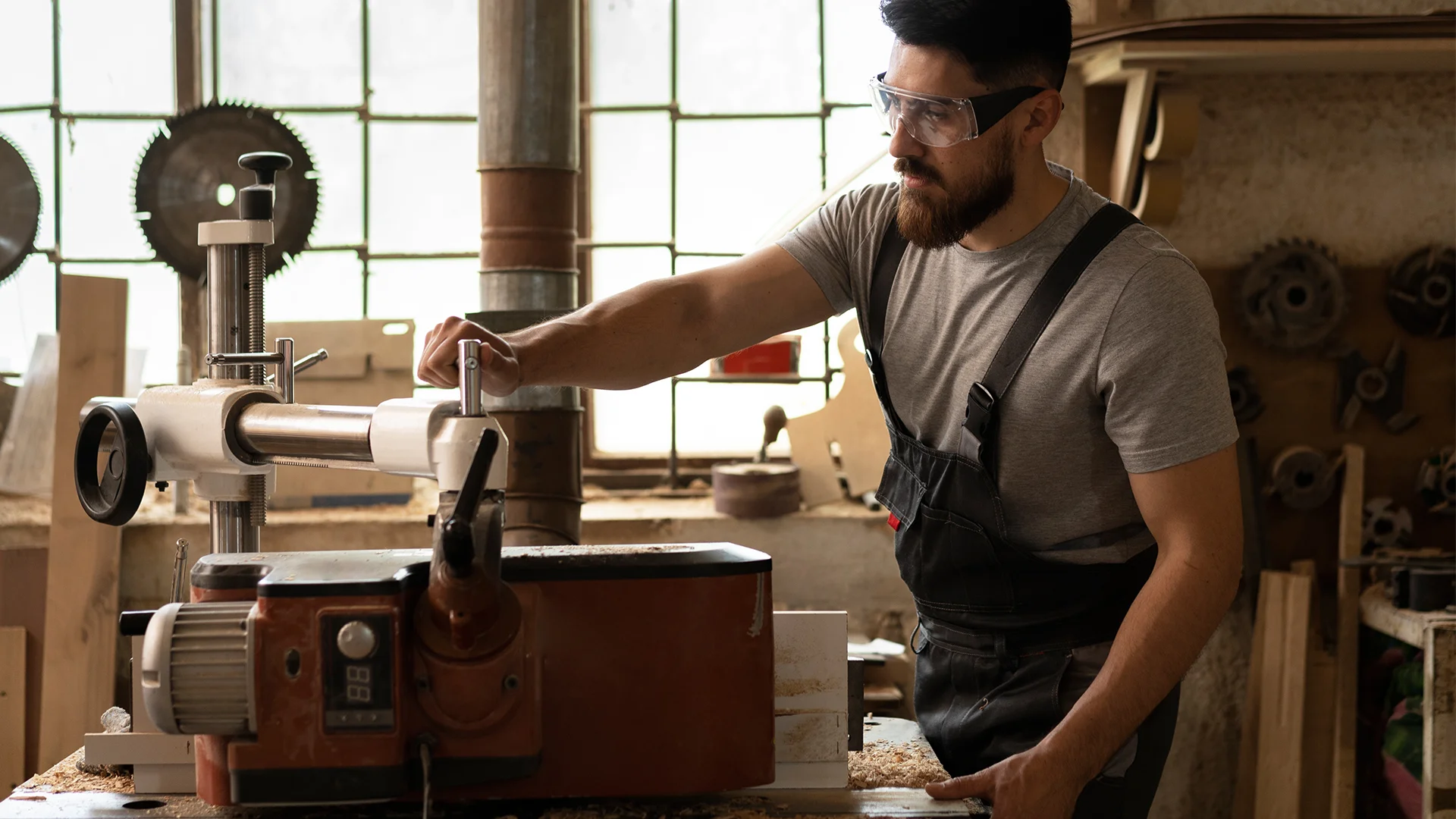
Choose the correct tool for the task and material, ensuring it’s in good condition and fit for purpose.
Dust Collection and Ventilation: Breathing Easy
Wood dust is a serious health hazard, so effective dust collection and ventilation are essential in any woodworking environment.
- Invest in a Dust Collection System – A dust collection system helps capture dust at the source, preventing it from becoming airborne and contaminating the workspace. Choose a system that is appropriate for the size and type of woodworking operations you perform.
- Ensure Adequate Ventilation – Good ventilation helps remove dust and fumes from the air, improving air quality and reducing the risk of respiratory problems. Open windows and doors whenever possible, and consider installing exhaust fans or air filtration systems.
- Wear Respiratory Protection – When working with materials that generate a lot of dust, wear a respirator or dust mask to protect your lungs. Choose a respirator that is rated for the specific hazards you’re exposed to and ensure a proper fit.
Emergency Preparedness: Ready for the Unexpected
Even with the best safety practices in place, accidents can still happen. Being prepared for emergencies can help minimize the impact of an injury and ensure prompt medical attention.
- First Aid Kit – Keep a well-stocked first aid kit readily available in your workspace. Ensure it contains supplies to treat minor cuts, burns, and other injuries.
- Emergency Procedures – Familiarize yourself with emergency procedures, such as how to shut off power to machinery, evacuate the workspace, and contact emergency services.
- First Aid Training – Consider getting your team to take a first aid course to learn how to respond to various injuries and medical emergencies.
By implementing these comprehensive risk mitigation strategies, woodworkers can create a safer and healthier working environment, allowing them to focus on their craft and enjoy the satisfaction of creating beautiful and functional objects from wood. Remember, safety is not just a goal, it’s a continuous journey that requires constant vigilance, awareness, and a commitment to best practices.

Ensure your team is prepared for any situation with first aid training.
Conclusion
Woodworking, an exquisite blend of artistry and craftsmanship, carries inherent risks that necessitate constant attention. From minor cuts to life-altering injuries, accidents can occur without proper precautions. This is where risk management takes center stage. By proactively identifying, assessing, and mitigating potential hazards, woodworkers can cultivate a secure environment where creativity and productivity flourish, unburdened by the fear of accidents. Remember, safety isn’t a one-off act but a continuous commitment demanding vigilance, education, and adaptability.
Elevate Your Craft with AWI
For woodworkers dedicated to upholding the highest standards of quality and craftsmanship, the Architectural Woodwork Institute (AWI) is an invaluable resource. Their comprehensive standards and guidelines provide a benchmark for excellence in woodworking, covering a wide range of topics from materials and construction techniques to finishing and installation. Explore the AWI’s offerings to elevate your woodworking practices and contribute to a legacy of exceptional craftsmanship.
Recent Post

How to Choose the Best Woodworking Compass: Expert Tips and Tricks
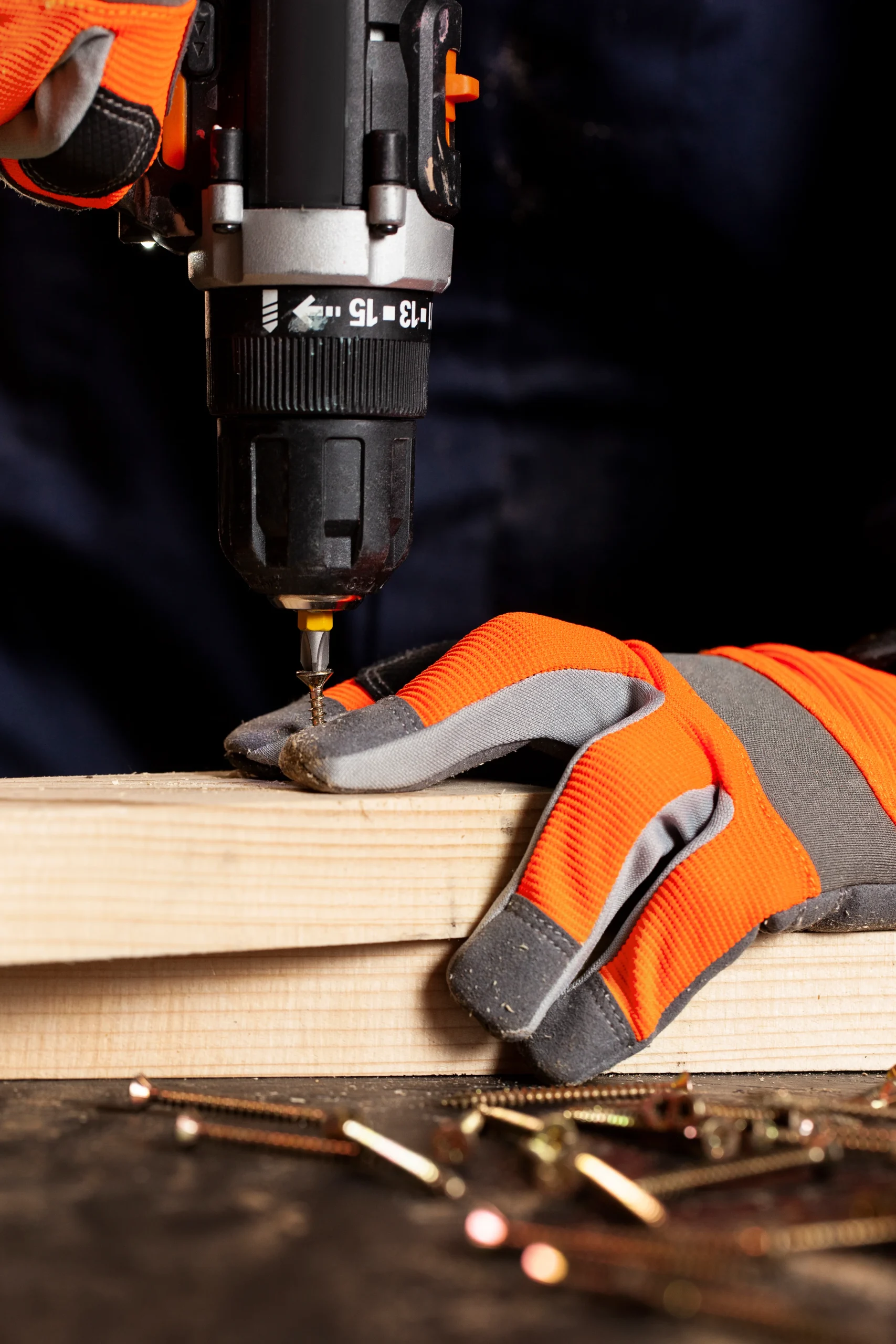
Screw Gun vs Drill: What Every Woodworker Needs to Know
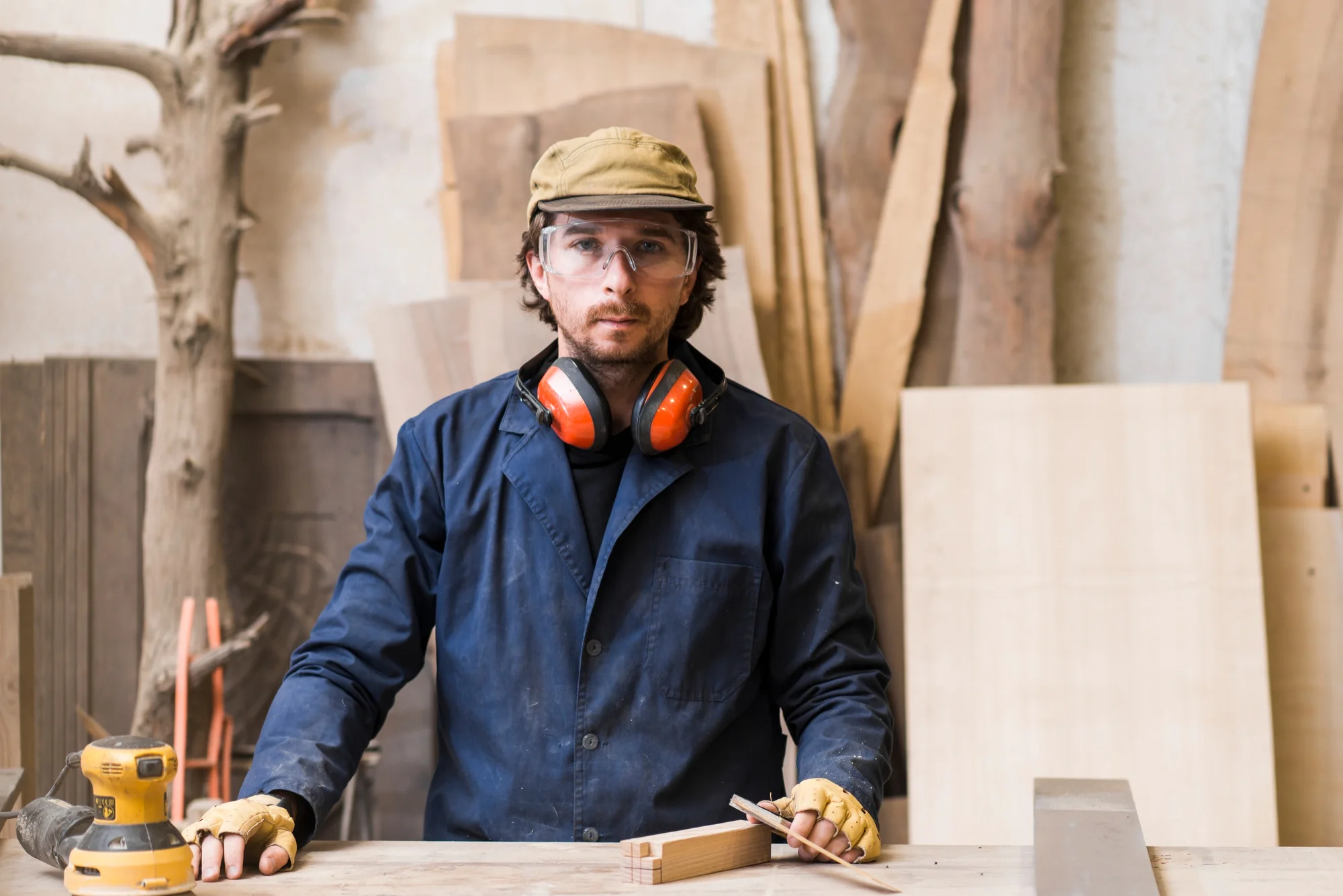
Woodworking PPE Checklist: Are You Fully Protected?
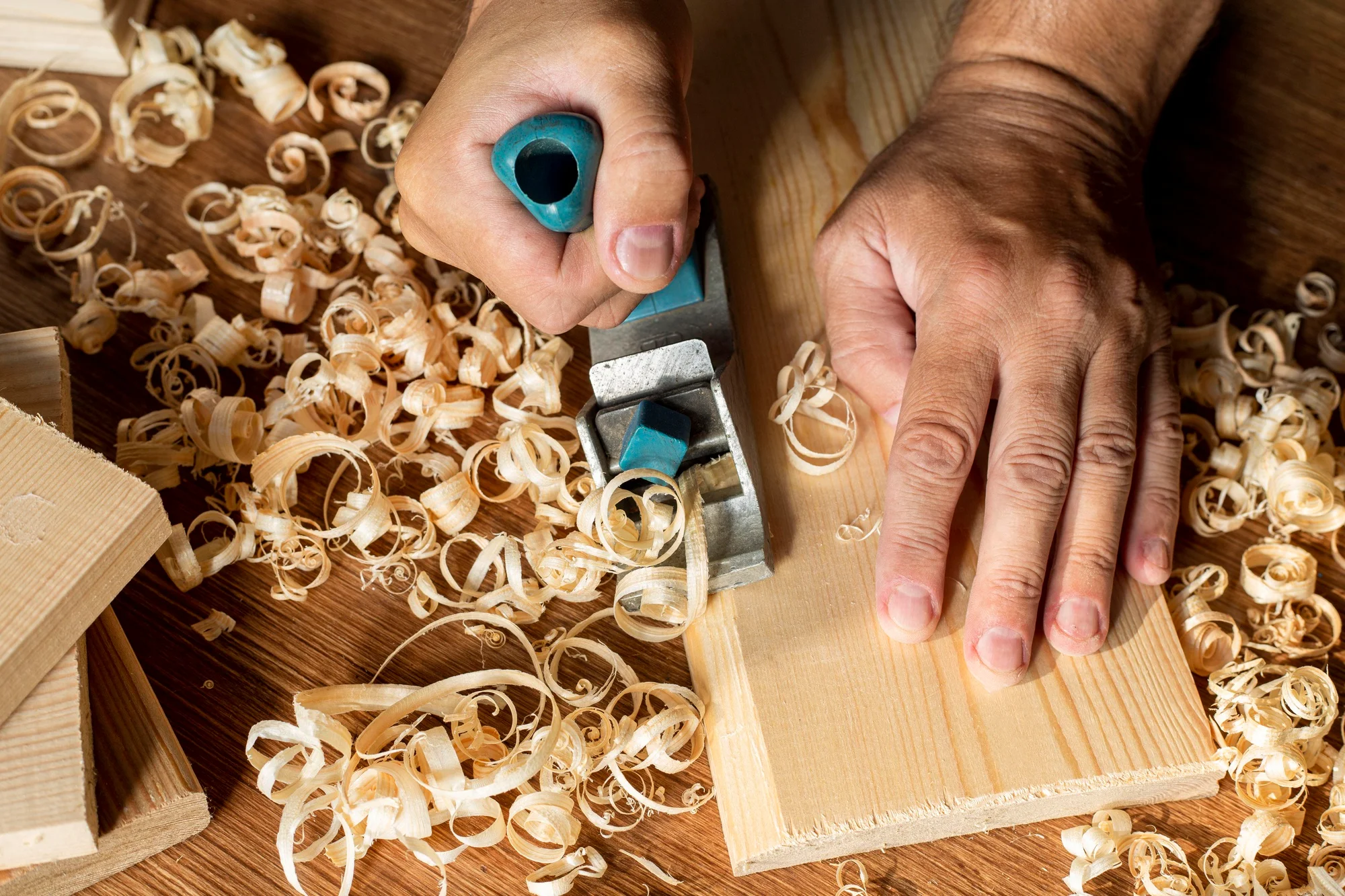
Green Woodworking 101: A Beginner’s Guide to Crafting with Unseasoned Wood
